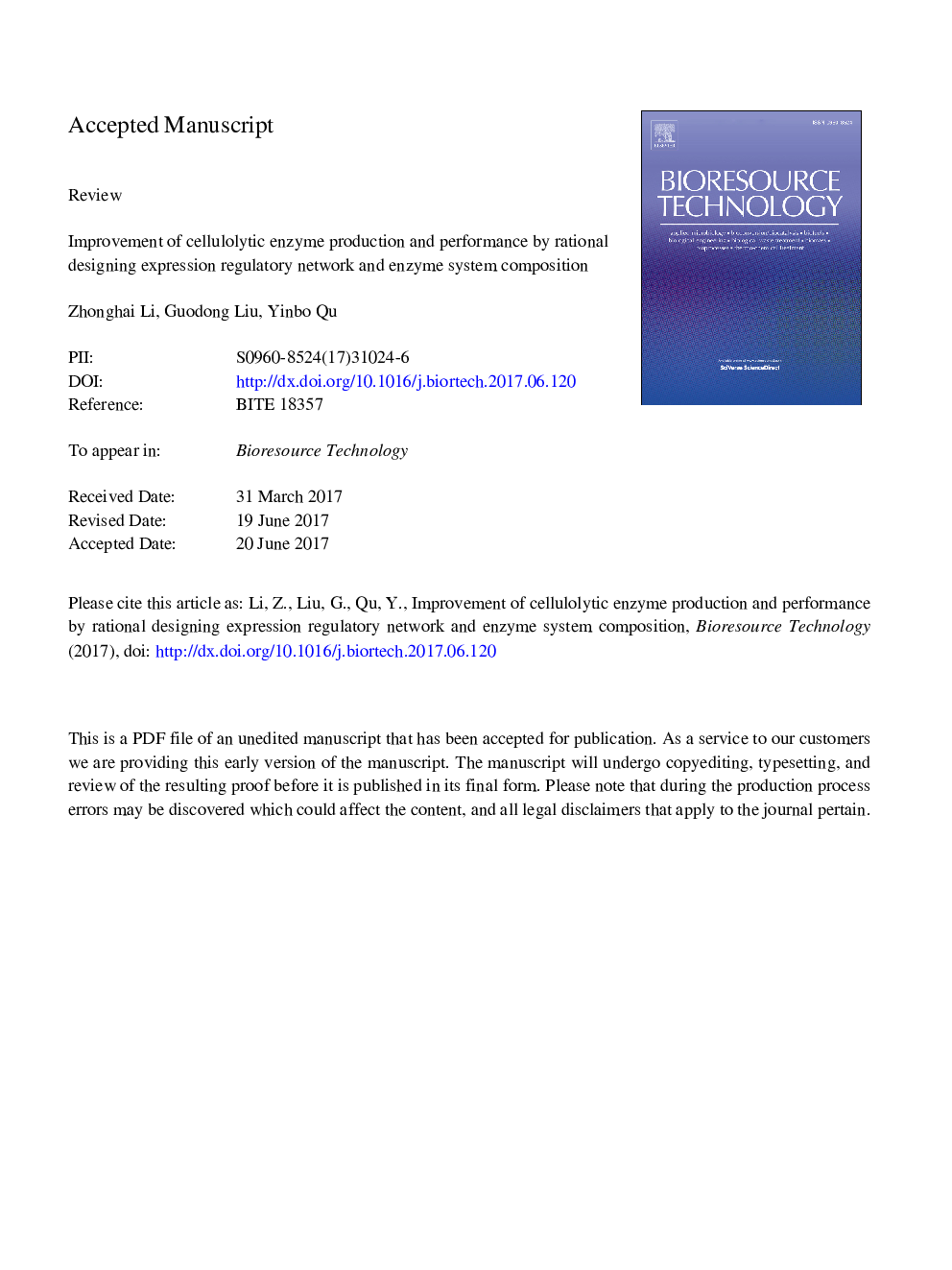| Article ID | Journal | Published Year | Pages | File Type |
|---|---|---|---|---|
| 7069513 | Bioresource Technology | 2017 | 42 Pages |
Abstract
Filamentous fungi are considered as the most efficient producers expressing lignocellulose-degrading enzymes. Penicillium oxalicum strains possess extraordinary fungal lignocellulolytic enzyme systems and can efficiently utilize plant biomass. In recent years, the regulatory aspects of production of hydrolytic enzymes by P. oxalicum have been well established. This review aims to discuss the recent developments for the production of lignocellulolytic enzymes by P. oxalicum. The main cellulolytic transcription factors mediating the complex transcriptional-regulatory network are highlighted. The genome-wide identification of cellulolytic transcription factors, the cascade regulation network for cellulolytic gene expression, and the synergistic and dose-controlled regulation by cellulolytic regulators are discussed. A cellulase regulatory network sensitive to inducers in intracellular environments, the cross-talk of regulation of lignocellulose-degrading enzyme and amylase, and accessory enzymes are also demonstrated. Finally, strategies for the metabolic engineering of P. oxalicum, which show promising applications in the enzymatic hydrolysis for biochemical production, are established.
Related Topics
Physical Sciences and Engineering
Chemical Engineering
Process Chemistry and Technology
Authors
Zhonghai Li, Guodong Liu, Yinbo Qu,
